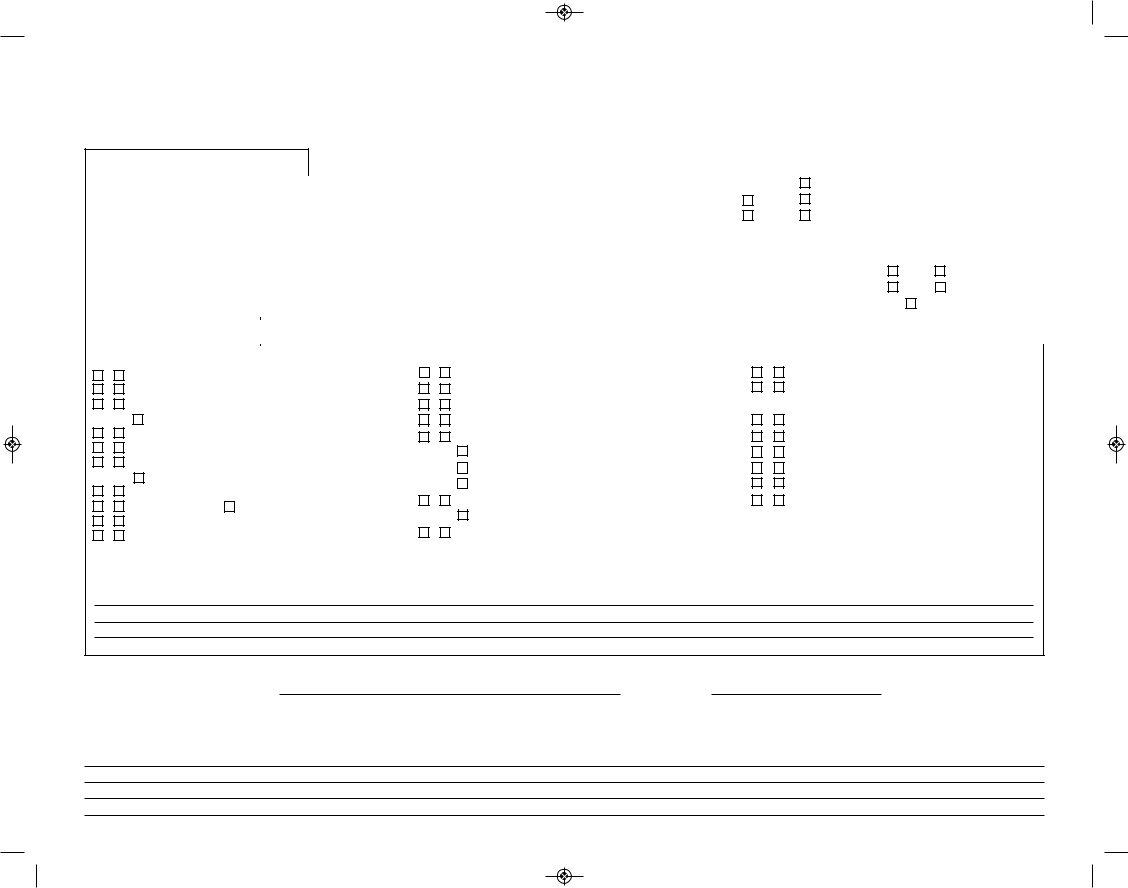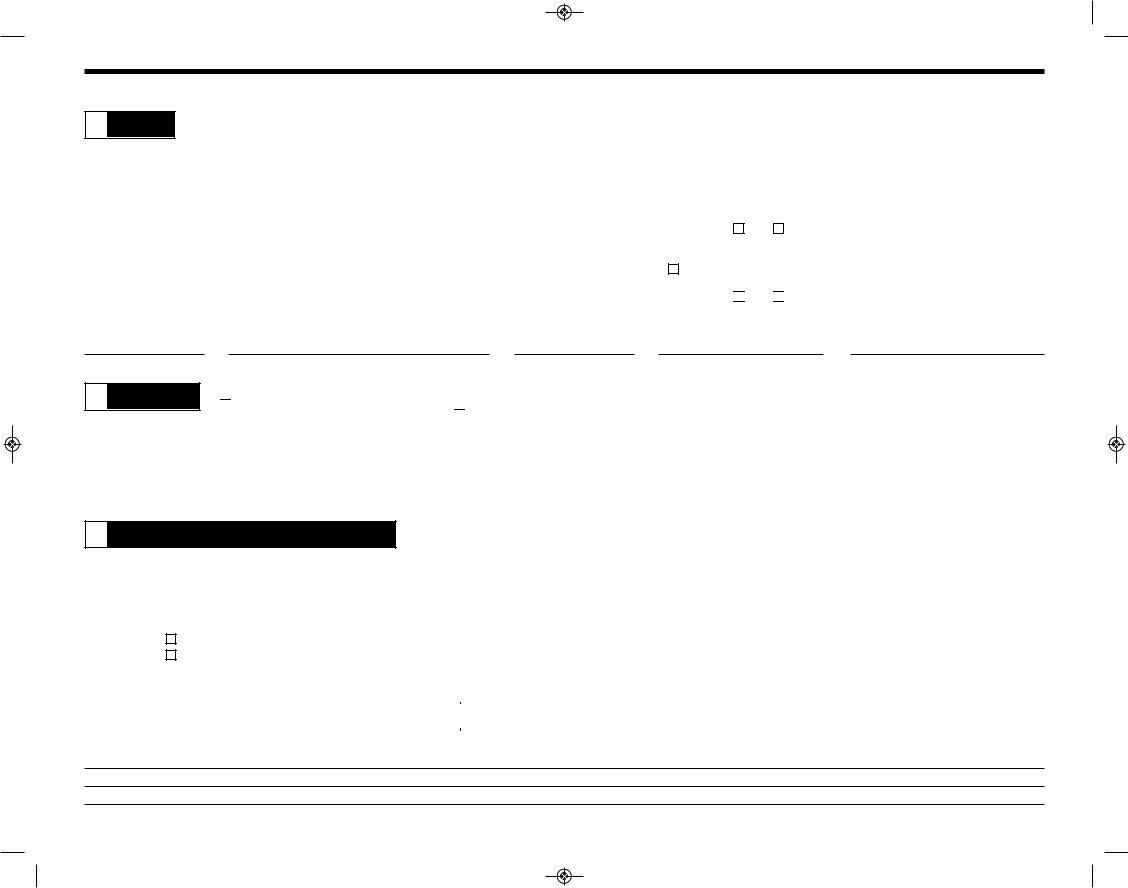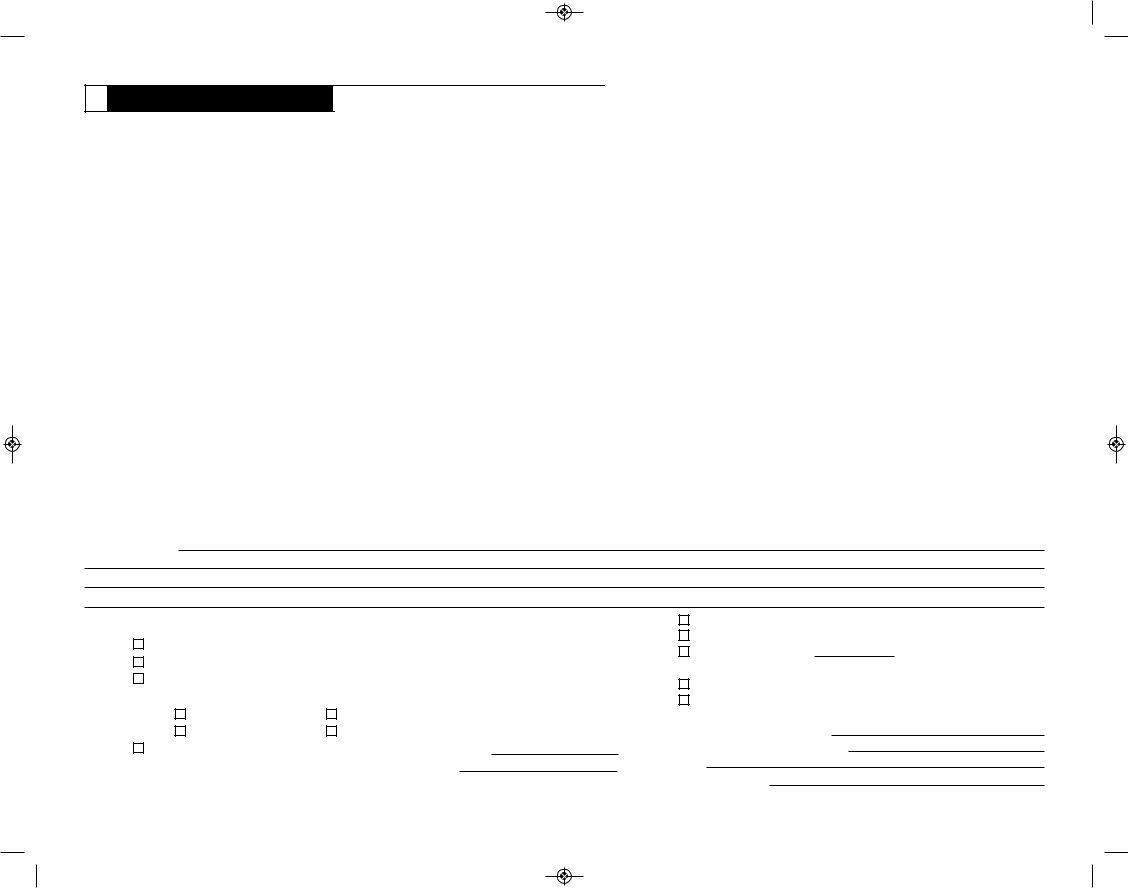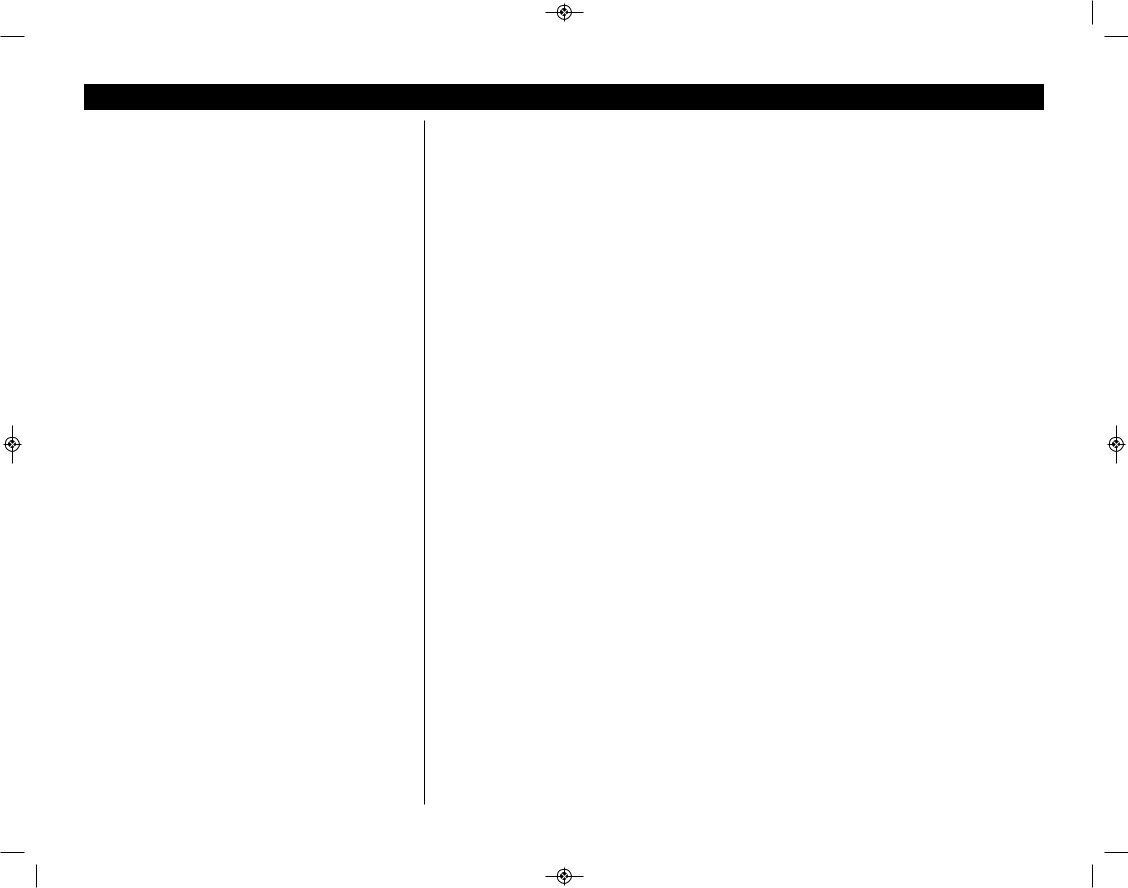The Medical Examination Report form, DL-171 (10-12), is an essential document for commercial driver fitness determination, which must be carefully completed by drivers and medical examiners alike. The form is structured to ensure that drivers meet the health and safety standards necessary for operating commercial vehicles. It begins with the driver providing personal and health history information, including any illnesses or injuries in the past five years, and details of any medication currently being taken. This initial section is designed to identify any conditions that could impair the driver's ability to safely operate a commercial vehicle. It then proceeds to a comprehensive health examination conducted by the medical examiner, covering vision, hearing, blood pressure, and laboratory findings, among others. The form also requires the medical examiner to record any physical abnormalities or conditions that could affect the driver's performance. A nuanced aspect of this form is the acknowledgment of the driver's role and the physical demands of commercial driving, highlighting the significance of the medical examination in ensuring both the driver's and public's safety. Completers of the form are reminded of the responsibility that comes with certifying fitness to drive, reflecting the form's broader objective to maintain high safety standards on the roads.
| Question | Answer |
|---|---|
| Form Name | Medical Examination Report Form |
| Form Length | 8 pages |
| Fillable? | No |
| Fillable fields | 0 |
| Avg. time to fill out | 2 min |
| Other names | medical report, blank medical report template, blank medical report sheet, medical report empty form |

Medical Examination Report
FOR COMMERCIAL DRIVER FITNESS DETERMINATION
1. DRIVER’S INFORMATION Driver completes this section.
Driver’s Name (Last, First, Middle) |
|
Social Security No. |
|
Birthdate |
Age |
|
Sex |
New Certification |
|
Date of Exam |
|||||||||||||||||||
|
|
|
|
|
|
|
|
|
|
|
|
|
|
|
|
|
|
|
|
|
|
|
M |
Recertification |
|
|
|
||
|
|
|
|
|
|
|
|
|
|
|
|
|
|
|
|
|
M / D / Y |
|
|
|
|
|
F |
Follow Up |
|
|
|
|
|
|
|
|
|
|
|
|
|
|
|
|
|
|
|
|
|
|
|
|
|
|
|
|
|
|
|
|
|
|
|
Address |
|
|
|
City, State, Zip Code |
|
Work Tel: ( |
) |
|
|
|
Driver License No. |
|
License Class |
State of |
|||||||||||||||
|
|
|
|
|
|
|
|
|
|
|
|
|
|
|
|
|
|
|
|
|
|
|
|
|
|
|
|
|
Issue |
|
|
|
|
|
|
|
|
|
|
|
|
|
|
Home Tel: ( |
) |
|
|
|
|
|
|
|
|
A |
C |
|
|||
|
|
|
|
|
|
|
|
|
|
|
|
|
|
|
|
|
|
|
|
|
|
|
|
|
|
B |
D |
|
|
|
|
|
|
|
|
|
|
|
|
|
|
|
|
|
|
|
|
|
|
|
|
|
|
|
|
|
|
Other |
|
|
|
|
|
|
|
|
|
|
|
|
|
|
|
|
|
|
|
|
|
|
|
|
|
|
|
||||
2. |
HEALTH HISTORY |
Driver completes this section, but medical examiner is encouraged to discuss with driver. |
|
|
|
|
|||||||||||||||||||||||
|
|
|
|
|
|
|
|
|
|
|
|
|
|
|
|
|
|
|
|
|
|
|
|
|
|||||
Yes No |
|
|
|
|
|
|
|
|
Yes No |
|
|
|
|
|
|
Yes No |
|
|
|
|
|||||||||
|
Any illness or injury in last 5 years? |
|
|
Lung disease, emphysema, asthma, chronic bronchitis |
|
|
|
Fainting, dizziness |
|
|
|
|
|||||||||||||||||
|
|
|
|
|
|
|
|
|
|
|
|
|
|
|
|
|
|
|
|
||||||||||
|
Head/Brain injuries, disorders or illnesses |
|
|
Kidney disease, dialysis |
|
|
|
|
|
|
|
Sleep disorders, pauses in breathing while asleep, |
|||||||||||||||||
|
Seizures, epilepsy |
|
|
|
|
|
|
|
|
|
Liver disease |
|
|
|
|
|
|
|
daytime sleepiness, loud snoring |
||||||||||
|
medication |
|
|
|
|
|
|
|
|
|
|
|
Digestive problems |
|
|
|
|
|
|
|
Stroke or paralysis |
|
|
|
|
||||
|
Eye disorders or impaired vision (except corrective lenses) |
|
|
Diabetes or elevated blood sugar controlled by: |
|
|
|
|
|
|
Missing or impaired hand, arm, foot, leg, finger, toe |
||||||||||||||||||
|
Ear disorders, loss of hearing or balance |
|
|
diet |
|
|
|
|
|
|
|
Spinal injury or disease |
|
|
|||||||||||||||
|
|
|
|
|
|
|
|
|
|
|
|
|
|
|
|
|
|
|
|
|
|
||||||||
|
Heart disease or heart attack, other cardiovascular condition |
|
|
pills |
|
|
|
|
|
|
|
Chronic low back pain |
|
|
|||||||||||||||
|
medication |
|
|
|
|
|
|
|
|
|
|
|
|
|
|
|
|
|
|
|
|||||||||
|
|
|
|
|
|
|
|
|
|
|
insulin |
|
|
|
|
|
|
|
Regular, frequent alcohol use |
|
|
||||||||
|
Heart surgery (valve replacement/bypass, angioplasty, pacemaker) |
|
|
|
|
|
|
|
|
|
|
|
|||||||||||||||||
|
|
|
Nervous or psychiatric disorders, e.g. severe depression |
|
|
|
Narcotic or habit forming drug use |
||||||||||||||||||||||
|
High blood pressure |
medication |
|
|
|
|
|
|
|
|
|
||||||||||||||||||
|
|
|
|
|
medication |
|
|
|
|
|
|
|
|
|
|
|
|
|
|
|
|||||||||
|
Muscular disease |
|
|
|
|
|
|
|
|
|
|
|
|
|
|
|
|
|
|
|
|
|
|
|
|
||||
|
|
|
|
|
|
|
|
|
|
Loss of, or altered consciousness |
|
|
|
|
|
|
|
|
|
|
|
|
|||||||
|
Shortness of breath |
|
|
|
|
|
|
|
|
|
|
|
|
|
|
|
|
|
|
|
|
|
|||||||
|
|
|
|
|
|
|
|
|
|
|
|
|
|
|
|
|
|
|
|
|
|
|
|
|
|
|
|||
|
|
|
|
|
|
|
|
|
|
|
|
|
|
|
|
|
|
|
|
|
|
|
|
|
|
|
|
|
|
For any YES answer, indicate onset date, diagnosis, treating physician’s name and address, and any current limitation. List all medications (including over-
I certify that the above information is complete and true. I understand that inaccurate, false or missing information may invalidate the examination and my Medical Examiner’s Certificate.
Driver’s Signature |
Date |
Medical Examiner’s Comments on Health History (The medical examiner must review and discuss with the driver any “yes” answers and potential hazards of medications, including

TESTING (Medical Examiner completes Section 3 through 7) Name: Last, |
First, |
Middle, |
|
|
|
|
|
|
3.VISION
Standard: At least 20/40 acuity (Snellen) in each eye with or without correction. At least 70° peripheral in horizontal meridian measured in each eye. The use of corrective lenses should be noted on the Medical Examiner’s Certificate.
INSTRUCTIONS: When other than the Snellen chart is used, give test results in
Numerical readings must be provided.
ACUITY |
UNCORRECTED |
CORRECTED |
HORIZONTAL FIELD OF VISION |
|
|
|
|
|
|
Right Eye |
20/ |
20/ |
Right Eye |
° |
|
|
|
|
|
Left Eye |
20/ |
20/ |
Left Eye |
° |
|
|
|
|
|
Both Eyes |
20/ |
20/ |
|
° |
|
|
|
|
|
Complete next line only if vision testing is done by an ophthalmologist or optometrist
Applicant can recognize and distinguish among traffic control signals and devices showing standard red, green and amber
colors? |
Yes |
No |
Applicant meets visual acuity requirement only when wearing: Corrective Lenses
Monocular Vision: Yes No
Date of Examination |
Name of Ophthalmologist or Optometrist (print) |
Tel. No. |
License No./State of Issue |
Signature |
4.HEARING
Standard: a) Must first perceive forced whispered voice ≥ 5 ft., with or without hearing aid, or b) average hearing loss in better ear ≤ 40 dB
Check if hearing aid used for tests. Check if hearing aid required to meet standard.
INSTRUCTIONS: To convert audiometric test results from ISO to ANSI,
Numerical readings must be recorded.
a) Record distance from individual at which |
Right Ear |
Left Ear |
forced whispered voice can first be heard. |
Feet |
Feet |
|
||
|
|
|
|
Right Ear |
|
Left Ear |
||||
|
|
||||||
|
|
||||||
b) If audiometer is used, |
500 Hz |
1000Hz |
2000Hz |
|
500 Hz |
1000Hz |
2000Hz |
record hearing loss in |
|
|
|
|
|
|
|
decibels. |
|
|
|
|
|
|
|
Average: |
|
Average: |
|||||
(acc. to ANSI |
|
||||||
|
|
|
|
|
|
|
|
|
|
|
|
|
|
|
|
5.BLOOD PRESSURE / PULSE RATE
Numerical readings must be recorded. Medical Examiner should take at least two readings to confirm BP.
|
|
|
|
|
|
|
|
|
|
GUIDELINES FOR BLOOD PRESSURE EVALUATION |
||||||
Blood |
Systolic |
|
Diastolic |
|
|
|
|
|||||||||
|
|
Reading |
|
Category |
Expiration Date |
|
Recertification |
|||||||||
|
|
|
|
|
|
|
||||||||||
|
|
|
|
|
|
|
|
|
||||||||
Pressure |
|
|
|
|
|
|
|
|
|
|
|
|
|
|
|
|
|
|
|
|
|
|
Stage 1 |
1 year |
|
1 year if ≤ 140/90. |
|||||||
|
|
|
|
|
|
|
|
|
||||||||
|
|
|
|
|
|
|
|
|
||||||||
Driver qualified if ≤ 140/90. |
|
|
|
|
|
|
||||||||||
|
|
|
|
|
|
|
|
|||||||||
|
|
|
|
|
|
|
|
Stage 2 |
1 yr. from date of certification exam if |
|||||||
Pulse |
Regular |
|
|
|
|
|||||||||||
|
|
|
|
≤140/90. |
||||||||||||
Rate |
Irregular |
|
|
|
|
|
|
|
|
|||||||
|
|
|
≥ 180/110 |
|
Stage 3 |
6 months from date of exam |
6 months if ≤ 140/90 |
|||||||||
|
|
|
|
|
|
|
|
|||||||||
|
|
|
|
|
|
|||||||||||
|
|
|
|
|
|
|
|
|
|
if ≤ 140/90 |
|
|||||
Record Pulse Rate: |
|
|
|
|
|
|
|
|
|
|
|
|
||||
|
|
|
|
|
|
|
|
|
|
|
|
|
||||
|
|
|
|
|
|
|
|
|
Numerical readings must be recorded. |
|
|
SP. GR. |
PROTEIN |
BLOOD |
SUGAR |
|
6. |
LABORATORY AND OTHER TEST FINDINGS |
|
URINE SPECIMEN |
|||||||||||||
|
|
|
|
|
||||||||||||
|
|
|
|
|
|
|
|
|
|
|
|
|
|
|
|
|
Urinalysis is required. Protein, blood or sugar in the urine may be an indication for further testing to rule out any underlying medical problem.
Other Testing (Describe and record)

7.PHYSICAL EXAMINATION
|
Height: |
|
(in.) |
Weight: |
|
(lbs.) |
Name: Last, |
First, |
Middle, |
|
|
||||||||
|
|
|
|
|
|
|
|
|
|
The presence of a certain condition may not necessarily disqualify a driver, particularly if the condition is controlled adequately, is not likely to worsen or is readily amenable to treatment. Even if a condition does not disqualify a driver, the medical examiner may consider deferring the driver temporarily. Also, the driver should be advised to take the necessary steps to correct the condition as soon as possible particularly if the condition, if neglected, could result in more serious illness that might affect driving.
Check YES if there are any abnormalities. Check NO if the body system is normal. Discuss any YES answers in detail in the space below, and indicate whether it would affect the driver’s ability to operate a commercial motor vehicle safely. Enter applicable item number before each comment. If organic disease is present, note that it has been com- pensated for.
See Instructions to the Medical Examiner for guidance.
BODY SYSTEM |
CHECK FOR: |
YES* |
NO |
|
|
|
BODY SYSTEM |
CHECK FOR: |
YES* |
NO |
||
|
|
|
|
|
|
|
|
|
|
|
|
|
1. |
General Appearance |
Marked overweight, tremor, signs of alcoholism, problem |
|
|
|
|
|
7. |
Abdomen and Viscera |
Enlarged liver, enlarged spleen, masses, bruits, hernia, |
|
|
|
|
drinking, or drug abuse. |
|
|
|
|
|
|
|
significant abdominal wall muscle weakness. |
|
|
2. |
Eyes |
Pupillary equality, reaction to light, accomodation, ocular |
|
|
|
|
|
8. |
Vascular System |
Abnormal pulse and amplitude, carotid or arterial bruits, |
|
|
|
|
motility, ocular muscle imbalance, extraocular movement, |
|
|
|
|
|
|
|
varicose veins. |
|
|
|
|
nystagmus, exophthalmos. Ask about retinopathy, cataracts, |
|
|
|
|
|
|
|
|
|
|
|
|
aphakia, glaucoma, mascular degeneration and refer to a |
|
|
|
|
|
9. |
Hernias. |
|
|
|
|
|
specialist if appropriate. |
|
|
|
|
|
|
|
|
|
|
|
|
|
|
|
|
|
|
10. Extremities - Limb |
Loss or impairment of leg, foot, toe, arm, hand or finger. |
|
|
|
3. |
Ears |
Scarring of tympanic membrane, occlusion of external canal, |
|
|
|
|
|
|
impaired. Driver may |
Perceptible limp, deformities, atrophy, weakness, paralysis, |
|
|
|
|
perforated eardrums. |
|
|
|
|
|
|
be subject to SPE |
clubbing, edema, hyptonia. Insufficient grasp and prehension |
|
|
|
|
|
|
|
|
|
|
|
certificate if otherwise |
in upper limb to maintain steering wheel grip. Insufficient |
|
|
4. |
Mouth and Throat |
Irremediable deformaties likely to interfere with breathing or |
|
|
|
|
|
|
qualified. |
mobility and strength in lower limb to operate pedals properly. |
|
|
|
|
swallowing. |
|
|
|
|
|
|
|
|
|
|
|
|
|
|
|
|
|
|
11. Spine, other |
Previous surgery, deformities, limitation of motion, |
|
|
|
5. |
Heart |
Murmurs, extra sounds, enlarged heart, pacemaker, |
|
|
|
|
|
|
musculoskeletal |
tenderness. |
|
|
|
|
implantable defibrillator. |
|
|
|
|
|
|
|
|
|
|
|
|
|
|
|
|
|
|
12. Neurological |
Impaired equilibrium, coordination or speech pattern; |
|
|
|
6. |
Lungs and chest, |
Abnormal chest wall expansion, abnormal respiratory rate, |
|
|
|
|
|
|
|
paresthesia, asymmetric deep tendon reflexes, sensory or |
|
|
|
not including breast |
abnormal breath sounds including wheezes or alveolar rales, |
|
|
|
|
|
|
|
positional abnormalities, abnormal patellar and Babinski’s |
|
|
|
examination |
impaired respiratory function, cyanosis. Abnormal findings on |
|
|
|
|
|
|
|
reflexes, ataxia. |
|
|
|
|
physical exam may require further testing such as pulmonary |
|
|
|
|
|
|
|
|
|
|
|
|
tests and/or |
|
|
|
|
|
|
|
|
|
|
*COMMENTS:
Note certification status here. See Instructions to the Medical Examiner for guidance.
Meets standards in 49 CFR 391.41; qualifies for 2 year certificate
Does not meet standards
Meets standards, but periodic evaluation required
Due to |
|
driver qualified only for: |
|
||
3 months |
1 year |
|
6 months |
Other |
|
Temporarily disqualified due to (condition or medication):
Return to medical examiner’s office for follow up on
Wearing corrective lenses |
|
Wearing hearing aid |
|
Accompanied by a |
waiver/exemption. Driver |
must present exemption at time of certification. Skill Performance Evaluation (SPE) Certificate
Driving within an exempt intracity zone (See 49 CFR 391.62)
Qualified by operation of 49 CFR 391.64 Medical Examiner’s Signature
Medical Examiner’s Name (print) Address
Telephone Number
If meets standards, complete a Medical Examiner’s Certificate according to 49 CFR 391.43(h). (Driver must carry certificate when operating a commercial vehicle.)

49 CFR 391.41 Physical Qualifications for Drivers
THE DRIVER’S ROLE
Responsibilities, work schedules, physical and emotional demands, and lifestyles among commercial drivers vary by the type of driving that they do. Some of the main types of drivers include the following: turn around or short relay (drivers return to their home base each evening); long relay (drivers drive
The following factors may be involved in a driver’s performance of duties: abrupt schedule changes and rotating work schedules, which may result in irregular sleep patterns and a driver begin- ning a trip in a fatigued condition; long hours; extended time away from family and friends, which may result in lack of social support; tight pickup and delivery schedules, with irregularity in work, rest, and eating patterns, adverse road, weather and traffic conditions, which may cause delays and lead to hurriedly loading or unloading cargo in order to compensate for the lost time; and environmental conditions such as excessive vibration, noise, and extremes in temperature. Transporting passengers or hazardous materials may add to the demands on the commercial driver.
There may be duties in addition to the driving task for which a driver is responsible and needs to be fit. Some of these responsibilities are: coupling and uncoupling trailer(s) from the tractor, loading and unloading trailer(s) (sometimes a driver may lift a heavy load or unload as much as 50,000 lbs. of freight after sitting for a long period of time without any stretching period); inspecting the operating condition of tractor and trailer(s) before, during, and after delivery of cargo; lifting, installing, and removing heavy tire chains; and, lifting heavy tarpaulins to cover open top trailers. The above tasks demand agility, the ability to bend and stoop, the ability to maintain a crouching position to inspect the underside of the vehicle, frequent entering and exiting of the cab, and the ability to climb ladders on the tractor and/or trailer(s).
In addition, a driver must have the perceptual skills to monitor a sometimes complex driving situation, the judgment skills to make quick decisions, when necessary, and the manipulative skills to control an oversize steering wheel, shift gears using a manual transmission, and maneuver a vehicle in crowded areas.
§391.41 PHYSICAL QUALIFICATIONS FOR DRIVERS
(a)A person shall not drive a commercial motor vehicle unless he is physically qualified to do so and, except as provided in §391.67, has on his person the original, or a photographic copy, of a medical examiner’s certificate that he is physically qualified to drive a commercial motor vehicle.
(b)A person is physically qualified to drive a motor vehi- cle if that person:
(1)Has no loss of a foot, a leg, a hand, or an arm, or has been granted a Skill Performance Evaluation (SPE) Certificate (formerly Limb Waiver Program) pursuant to §391.49.
(2)Has no impairment of: (i) A hand or finger which interferes with prehension or power grasping; or (ii) An arm, foot, or leg which interferes with the ability to perform normal tasks associated with operating a commercial motor vehicle; or any other significant limb defect or limitation which inter- feres with the ability to perform normal tasks associated with operating a commercial motor vehicle; or has been granted a SPE Certificate pursuant to §391.49.
(3)Has no established medical history or clinical diagnosis of diabetes mellitus currently requiring insulin for control;
(4)Has no current clinical diagnosis of myocardial infarction, angina pectoris, coronary insufficiency, thrombosis, or any other cardiovascular disease of a variety known to be accompanied by syncope, dyspnea, collapse, or congestive cardiac failure.
(5)Has no established medical history or clinical diagnosis of a respiratory dysfunction to interfere with his abili- ty to control and drive a commercial motor vehicle safely.
(6)Has no current clinical diagnosis of high blood pressure likely to interfere with his ability to operate a commercial motor vehicle safely.
(7)Has no established medical history or clinical diagnosis of rheumatic, arthritic, orthopedic, muscular, neuro- muscular, or vascular disease which interferes with his ability to control and operate a commercial motor vehicle safely.
(8)Has no established medical history or clinical diagnosis of epilepsy or any other condition which is likely to cause loss of consciousness or any loss of ability to control a commercial motor vehicle;
(9)Has no mental, nervous, organic, or functional disease or psychiatric disorder likely to interfere with his ability to drive a commercial motor vehicle safely;
(10)Has distant visual acuity of at least 20/40 (Snellen) in each eye without corrective lenses or visual acuity separately corrected to 20/40 (Snellen) or better with corrective lenses, distant binocular acuity of at least 20/40 (Snellen) in both eyes with or without corrective lenses, field of vision of at least 70 degrees in the horizontal meridian in each eye, and the ability to recognize the colors of traffic signals and devices showing standard red, green and amber;
(11)First perceives a forced whispered voice in the better ear not less than 5 feet with or without the use of a hearing aid, or, if tested by use of an audiometric device, does not have an average hearing loss in the better ear greater than 40 decibels at 500 Hz, 1,000 Hz and 2,000 Hz with or without a hearing device when the audiometric device is calibrated to American National Standard (formerly ASA Standard)
(12)(i) Does not use any drug or substance identified in 21 CFR 1308.11 Schedule I, an amphetamine, a narcotic, or other
(ii)Does not use any
(13)Has no current clinical diagnosis of alcoholism.

INSTRUCTIONS TO THE MEDICAL EXAMINER
General Information
The purpose of this examination is to determine a driver’s physical qualification to operate a commercial motor vehicle (CMV) in interstate commerce according to the requirements in 49 CFR
Federal Motor Carrier Safety Regulations
In addition to reviewing the Health History section with the driver and conducting the physical examination, the medical examin- er should discuss common prescriptions and
Medical conditions should be recorded even if they are not cause for denial, and they should be discussed with the driver to encourage appropriate remedial care. This advice is especially needed when a condition, if neglected could develop into a serious illness that could affect driving.
If the medical examiner determines that the driver is fit to drive and is also able to perform
Interpretation of Medical Standards
Since the issuance of the regulations for physical qualifications of commercial drivers, the Federal Motor Carrier Safety Administration (FMCSA) has published recommendations called Advisory Criteria to help medical examiners in determining whether a driver meets the physical qualifications for commercial driving. These recommen- dations have been condensed to provide information to the medical examiners that (1) is directly relevant to the physical examination and (2) is not already included in the medical examination form. The specific regulation is printed in italics and its reference by sec- tion is highlighted.
Loss of Limb: §391.41(b)(1)
A person is physically qualified to drive a commercial motor vehicle if that person:
Has no loss of a foot, leg, hand, or an arm, or has been granted a Skill Performance Evaluation (SPE) Certificate pursuant to Section 391.49.
Limb Impairment: §391.41(b)(2)
A person is physically qualified to drive a commercial motor vehicle if that person:
Has no impairment of: (i) A hand or finger which interferes with prehension or power grasping; or (ii) An arm, foot, or leg which interferes with the ability to perform normal tasks associated with operating a commercial motor vehicle; or (iii) Any other significant limb defect or limitation which interferes with ability to perform normal tasks associated with operat- ing a commercial motor vehicle; or (iv) Has been granted a Skill Performance Evaluation Certificate pursuant to Section 391.49.
A person who suffers loss of a foot, leg, hand or arm or whose limb impairment in any way interferes with the safe performance of normal tasks associated with operating a commercial motor vehicle is subject to the Skill Performance Evaluation (SPE) Certification Program pursuant to section 391.49, assuming the person is otherwise qualified.
With the advancement of technology, medical aids and equipment modifications have been developed to compen- sate for certain disabilities. The SPE Certification Program (formerly the Limb Waiver Program) was designed to allow persons with the loss of a foot or limb or with functional impairment to qualify under the Federal Motor Carrier Safety Regulations (FMCSRs) by use of prosthetic devices or equipment modifications which enable them to safely oper- ate a commercial motor vehicle. Since there are no medical aids equivalent to the original body or limb, certain risks are still present, and thus restrictions may be included on indi- vidual SPE certificates when a State Director for the FMCSA determines they are necessary to be consistent with safety and public interest.
If the driver is found otherwise medically qualified (391.41(b)(3) through (13)), the medical examiner must check on the medical certificate that the driver is qualified only if accompanied by a SPE certificate. The driver and the employing motor carrier are subject to appropriate penalty if the driver operates a motor vehicle in interstate or foreign commerce without a current SPE certificate for his/her physical disability.
Diabetes §391.41(b)(3)
A person is physically qualified to drive a commercial motor vehicle if that person:
Has no established medical history or clinical diagnosis of diabetes mellitus currently requiring insulin for control.
Diabetes mellitus is a disease which, on occasion, can result in a loss of consciousness or disorientation in time and space. Individuals who require insulin for control have conditions which can get out of control by the use of too much or too little insulin, or food intake not consistent with the insulin dosage. Incapacitation may occur from symp- toms of hyperglycemic or hypoglycemic reactions (drowsi- ness, semiconsciousness, diabetic coma or insulin shock).
The administration of insulin is, within itself, a complicat- ed process requiring insulin, syringe, needle, alcohol sponge and a sterile technique. Factors related to
Hypoglycemic drugs, taken orally, are sometimes prescribed for diabetic individuals to help stimulate natural body production of insulin. If the condition can be con- trolled by the use of oral medication and diet, then an indi- vidual may be qualified under the present rule. CMV drivers who do not meet the Federal diabetes standard may call
(202)
Cardiovascular Condition §391.41(b)(4)
A person is physically qualified to drive a commercial motor vehicle if that person:
Has no current clinical diagnosis of myocardial infarction, angina pectoris, coronary insufficiency, thrombosis or any other cardiovascular disease of a variety known to be accompanied by syncope, dyspnea, collapse or congestive cardiac failure.
The term “has no current clinical diagnosis of” is specifically designed to encompass: “a clinical diagnosis of”
(1)a current cardiovascular condition, or (2) a cardiovascular condition which has not fully stabilized regardless of the time limit. The term “known to be accompanied by” is designed to include: a clinical diagnosis of a cardiovascular disease (1)

which is accompanied by symptoms of syncope, dyspnea, col- lapse or congestive cardiac failure; and/or (2) which is likely to cause syncope, dyspnea, collapse or congestive cardiac failure. It is the intent of the FMCSRs to render unqualified, a
driver who has a current cardiovascular disease which is accompanied by and/or likely to cause symptoms of syncope, dyspnea, collapse, or congestive cardiac failure. However, the subjective decision of whether the nature and severity of an individual’s condition will likely cause symptoms of cardiovascular insufficiency is on an individual basis and qualification rests with the medical examiner and the motor carrier. In those cases where there is an occurrence of cardiovascular insufficiency (myocardial infarction, thrombosis, etc.), it is suggested before a driver is certified that he or she have a normal resting and stress electrocardiogram (ECG), no residual complications and no physical limitations, and is taking no medication likely to interfere with safe driving.
Coronary artery bypass surgery and pacemaker implanta- tion are remedial procedures and thus, not unqualifying. Implantable cardioverter defibrillators are disqualifying due to risk of syncope. Coumadin is a medical treatment which can improve health and safety of the driver and should not, by its use, medically disqualify the commercial driver. The emphasis should be on the underlying medical condition(s) which require treatment and the general health of the driver. The FMCSA should be contacted at (202)
(See Cardiovascular Advisory Panel Guidelines for the Medical Examination of Commercial Motor Vehicle Drivers at http://www.fmcsa.dot.gov/rulesregs/medreports.htm)
Respiratory Dysfunction §391.41(b)(5)
A person is physically qualified to drive a commercial motor vehicle if that person:
Has no established medical history or clinical diagnosis of a res- piratory dysfunction likely to interfere with ability to control and drive a commercial motor vehicle safely.
Since a driver must be alert at all times, any change in his or her mental state is in direct conflict with highway safety. Even the slightest impairment in respiratory function under emergency conditions (when greater oxygen supply is neces- sary for performance) may be detrimental to safe driving.
There are many conditions that interfere with oxygen exchange and may result in incapacitation, including emphysema, chronic asthma, carcinoma, tuberculosis, chronic bronchitis and sleep apnea. If the medical examiner detects a respiratory dysfunction, that in any way is likely to interfere with the driver’s ability to safely control and drive a commercial motor vehicle, the driver must be referred to a specialist for further evaluation and therapy. Anticoagulation therapy for deep vein thrombosis
and/or pulmonary thromboembolism is not unqualifying once optimum dose is achieved, provided lower extremity venous examinations remain normal and the treating physician gives a favorable recommendation.
(See Conference on Pulmonary/Respiratory Disorders and Commercial Drivers at: http://www.fmcsa.dot.gov/rulesregs/medreports.htm)
Hypertension §391.41(b)(6)
A person is physically qualified to drive a commercial motor vehicle if that person:
Has no current clinical diagnosis of high blood pressure likely to interfere with ability to operate a commercial motor vehicle safely.
Hypertension alone is unlikely to cause sudden collapse; however, the likelihood increases when target organ damage, particularly cerebral vascular disease, is present. This regulatory criteria is based on FMCSA’s Cardiovascular Advisory Guidelines for the Examination of CMV drivers, which used the Sixth Report of the Joint National Committee on Prevention, Detection, Evaluation, and Treatment of High Blood Pressure (1997).
Stage 1 hypertension corresponds to a systolic BP of
A blood pressure of
A blood pressure at or greater than 180 (systolic) and 110 (diastolic) is considered Stage three, high risk for an acute BP- related event. The driver may not be qualified, even temporari- ly, until reduced to 140/90 or less and treatment is well tolerat- ed. The driver may be certified for 6 months and biannually (every 6 months) therafter if at recheck BP is 140/90 or less.
Annual recertification is recommended if the medical examiner does not know the severity of hypertension prior to treatment.
An elevated blood pressure finding should be confirmed by at least two subsequent measurements on different days.
Treatment includes nonpharmacologic and pharmacologic modalities as well as counseling to reduce other risk factors. Most antihypertensive medications also have side effects, the importance of which must be judged on an individual basis. Individuals must be alerted to the hazards of these medications while driving. Side effects of somnolence of snycope are particulary undesirable in commercial drivers.
Secondary hypertension is based on the above stages. Evaluation is warranted if patient is persistently hypertensive on maximal or
(See Cardiovascular Advisory Panel Guidelines for the Medical Examination of Commercial Motor Vehicle Drivers at: http://www.fmcsa.dot.gov/rulesregs/medreports.htm)
Rheumatic, Arthritic, Orthopedic, Muscular, Neuromuscular or Vascular Disease
§391.41(b)(7)
A person is physically qualified to drive a commercial motor vehicle if that person:
Has no established medical history or clinical diagnosis of rheumatic, arthritic, orthopedic, muscular, neuromuscular or vascular disease which interferes with the ability to control and operate a commercial motor vehicle safely.
Certain diseases are known to have acute episodes of transient muscle weakness, poor muscular coordination (ataxia), abnormal sensations (paresthesia), decreased muscular tone (hypotonia), visual disturbances and pain which may be sud- denly incapacitating. With each recurring episode, these symp- toms may become more pronounced and remain for longer periods of time. Other diseases have more insidious onsets and display symptoms of muscle wasting (atrophy), swelling and paresthesia which may not suddenly incapacitate a person but may restrict his/her movements and eventually interfere with the ability to safely operate a motor vehicle. In many instances these diseases are degenerative in nature or may result in deterio- ration of the involved area.
Once the individual has been diagnosed as having rheu- matic, arthritic, orthopedic, muscular, neuromuscular or vascular disease, then he/she has an established history of that disease. The physician, when examining an individual, should consider the following: (1) the nature and severity of the individual’s con- dition (such as sensory loss or loss of strength); (2) the degree of limitation present (such as range of motion); (3) the likelihood of progressive limitation (not always present initially but may manifest itself over time); and (4) the likelihood of sudden incapacitation. If severe functional impairment exists, the driver does not qualify. In cases where more frequent monitoring is required, a certificate for a shorter time period may be issued. (See Conference on Neurological Disorders and Commercial Drivers at: http://www.fmcsa.dot.gov/rulesregs/medreports.htm)

Epilepsy §391.41(b)(8)
A person is physically qualified to drive a commercial motor vehicle if that person:
Has no established medical history or clinical diagnosis of epilepsy or any other condition which is likely to cause loss of consciousness or any loss of ability to control a motor vehicle.
Epilepsy is a chronic functional disease characterized by seizures or episodes that occurs without warning, resulting in loss of voluntary control which may lead to loss of consciousness and/or seizures. Therefore, the following drivers cannot be qualified: (1) a driver who has a medical history of epilepsy;
(2)a driver who has a current clinical diagnosis of epilepsy; or
(3)a driver who is taking antiseizure medication.
If an individual has had a sudden episode of a nonepileptic seizure or loss of consciousness of unknown cause which did not require antiseizure medication, the decision as to whether that person’s condition will likely cause loss of consciousness or loss of ability to control a motor vehicle is made on an indi- vidual basis by the medical examiner in consultation with the treating physician. Before certification is considered, it is sug- gested that a
In those individual cases where a driver has a seizure or an episode of loss of consciousness that resulted from a known medical condition (e.g., drug reaction, high temperature, acute infectious disease, dehydration or acute metabolic disturbance), certification should be deferred until the driver has fully recovered from that condition and has no existing residual complications, and not taking antiseizure medication.
Drivers with a history of epilepsy/seizures off antiseizure medication and
(See Conference on Neurological Disorders and Commercial Drivers at: http://www.fmcsa.dot.gov/rulesregs/medreports.htm)
Mental Disorders §391.41(b)(9)
A person is physically qualified to drive a commercial motor vehicle if that person:
Has no mental, nervous, organic or functional disease or psychiatric disorder likely to interfere with ability to drive a motor vehicle safely.
Emotional or adjustment problems contribute directly to an individual’s level of memory, reasoning, attention and judgement. These problems often underlie physical disorders. A variety of functional disorders can cause drowsiness, dizziness, confusion, weakness or paralysis that may lead to incoordination, inattention, loss of functional control and susceptibility to crashes while driving. Physical fatigue, headache, impaired coordination, recurring physical ailments and chronic “nagging” pain may be present to such a degree that certification for commercial driving is inadvisable. Somatic and psychosomatic complaints should be thoroughly examined when determining an individual’s overall fitness to drive. Disorders of a periodically incapacitating nature, even in the early stages of development, may warrant disqualification.
Many bus and truck drivers have documented that “nervous trouble” related to neurotic, personality, emotional or adjustment problems is responsible for a significant fraction of their preventable accidents. The degree to which an individual is able to appreciate, evaluate and adequately respond to environmental strain and emotional stress is critical when assessing an individual’s mental alertness and flexibility to cope with the stresses of commercial motor vehicle driving.
When examining the driver, it should be kept in mind that individuals who live under chronic emotional upsets may have deeply ingrained maladaptive or erratic behavior patterns.
Excessively antagonistic, instinctive, impulsive, openly aggressive, paranoid or severely depressed behavior greatly interfere with the driver’s ability to drive safely. Those individuals who are highly susceptible to frequent states of emotional instability (schizophrenia, affective psychoses, paranoia, anxiety or depressive neuroses) may warrant disqualification. Careful consideration should be given to the side effects and interac- tions of medications in the overall qualification determination. See Psychiatric Conference Report for specific recommenda- tions on the use of these medications and potential hazards for driving.
(See Conference on Psychiatric Disorders and Commercial Drivers at: http://www.fmcsa.dot.gov/rulesregs/medreports.htm)
Vision §391.41(b)(10)
A person is physically qualified to drive a commercial motor vehicle if that person:
Has distant visual acuity of at least 20/40 (Snellen) in each eye with or without corrective lenses or visual acuity separately cor- rected to 20/40 (Snellen) or better with corrective lenses, distant binocular acuity of at least 20/40 (Snellen) in both eyes with or without corrective lenses, field of vision of at least 70 degrees in the horizontal meridian in each eye, and the abitlity to recognize the colors of traffic signals and devices showing standard red, green, and amber.
The term “ability to recognize the colors of” is interpreted to mean if a person can recognize and distinguish among traffic control signals and devices showing standard red, green and amber, he or she meets the minimum standard, even though he or she may have some type of color perception deficiency. If certain color perception tests are administered, (such as Ishihara, Pseudoisochromatic, Yarn) and doubtful findings are discovered, a controlled test using signal red, green and amber may be employed to determine the driver’s ability to recognize these colors.
Contact lenses are permissible if there is sufficient evidence to indicate that the driver has good tolerance and is well adapted to their use. Use of a contact lens in one eye for distance visual acuity and another lens in the other eye for near vision is not acceptable, nor telescopic lenses acceptable for the driving of commercial motor vehicles.
If an individual meets the criteria by the use of glasses or contact lenses, the following statement shall appear on the Medical Examiner’s Certificate: “Qualified only if wearing corrective lenses.”
CMV drivers who do not meet the Federal vision standard may call (202)
(See Visual Disorders and Commercial Drivers at: http://www.fmcsa.gov/rulesregs/medreports.htm)
Hearing §391.41(b)(11)
A person is physically qualified to drive a commercial motor vehicle if that person:
First perceives a forced whispered voice in the better ear at not less than 5 feet with or without the use of a hearing aid, or, if tested by use of an audiometric device, does not have an average hearing loss in the better ear greater than 40 decibels at 500 Hz, 1,000 Hz, and 2,000 Hz with or without a hearing aid when the audiometric device is calibrated to American National Standard (formerly ASA Standard)
Since the prescribed standard under the FMCSRs is the American Standards Association (ANSI), it may be necessary to convert the audiometric results from the ISO standard to the ANSI standard. Instructions are included on the Medical Examination report form.
If an individual meets the criteria by using a hearing aid, the driver must wear that hearing aid and have it in operation at

all times while driving. Also, the driver must be in possession of a spare power source for the hearing aid.
For the whispered voice test, the individual should be stationed at least 5 feet from the examiner with the ear being tested turned toward the examiner. The other ear is covered. Using the breath which remains after a normal expiration, the examiner whispers words or random numbers such as 66, 18, 23, etc. The examiner should not use only sibilants
If an individual meets the criteria by the use of a hearing aid, the following statement must appear on the Medical Examiner’s Certificate “Qualified only when wearing a hearing aid.”
(See Hearing Disorders and Commercial Motor Vehicle Drivers at: http://www.fmcsa.dot.gov/rulesregs/medreports.htm)
Drug Use §391.41(b)(12)
A person is physically qualified to drive a commercial motor vehicle if that person does not use any drug or substance identified in 21 CFR 1308.II, an amphetamine, a narcotic, or other
This exception does not apply to methadone. The intent of the medical certification process is to medically evaluate a driver to ensure that the driver has no medical condition which interferes with the safe performance of driving tasks on a public road. If a driver uses an amphetamine, a narcotic, or any other habit forming drug, it may be cause for the driver to be found medically unqualified. If a driver uses a Schedule I drug or substance, it will be cause for the driver to be found medically unqualified. Motor carriers are encour- aged to obtain a practitioner’s written statement about the effects on transportation safety of the use of a particular drug.
A test for controlled substances is not required as part of the biennial certification process. The FMCSA or the driver’s employer should be contacted directly for information on con- trolled substances and alcohol testing under Part 382 of the FMCSRs.
The term “uses” is designed to encompass instances of prohibited drug use determined by a physician through established medical means. This may or may not involve body fluid testing. If body fluid testing takes place, positive
test results should be confirmed by a second test of greater specificity. The term
The driver is medically unqualified for the duration of the prohibited drug(s) use and until a second examination show the driver is free from the prohibited drug(s) use. Recertification may involve a substance abuse evaluation, the successful com- pletion of a drug rehabilitation program, and a negative drug test result. Additionally, given that the certification period is normally two years, the examiner has the option to certify for a period less than 2 years if this examiner determines more fre- quent monitoring is required.
(See Conference on Neurological Disorders and Commercial Drivers and Conference on Psychiatric Disorders and Commercial Drivers at: http://www.fmcsa.dot.gov/rulesregs/medreports.htm)
Alchoholism §391.41(b)(13)
A person is physically qualified to drive a commercial motor vehicle if that person:
Has no current clinical diagnosis of alcoholism.
The term “current clinical diagnosis of” is specifically designed to encompass a current alcoholic illness or those instances where the individual’s physical condition has not fully stabilized, regardless of the time element. If an individual shows signs of having an
Motor Carrier Safety Regulations
Applicability of Medical and Certification Requirements Article - Maryland Transportation
§
Except in the case of bus drivers, apply the provisions of §391.41 (b)(1) through (11) of the Federal Motor Carrier Safety Regulations before October 1, 2023 to any persons who:
1.On October 1, 2003, was otherwise qualified to operate and operated a vehicle or vehicle combination used in intrastate commerce with a gross vehicle weight rating or gross combination weight rating of 10,001 pounds or more, and after October 1, 2003, remained qualified to operate and continued to operate such a vehicle;
2.Operates only in intrastate commerce; and
3.Has a mental or physical condition which would disqualify the person under the Federal Motor Carrier Safety Regulations and:
A.The condition existed on October 1, 2003 or at the time of the physical examination after that date to which the person submitted as required by regulations adopted by the Administration under subsection (k) of this section; and
B.A physician who examined the person has determined that the condition has not substantially worsened and that no other disqualifying medical or physical condition has developed since October 1, 2003 or the time of the first required physical examination after that date.
Section 2. and be it further enacted, that this Act shall take effect October 1, 2003.